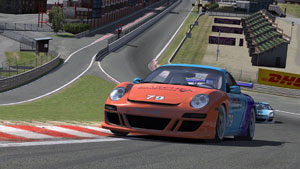 Simracing is harsh, and if you expect things to come easily, you’ll be quickly demotivated. Getting good is a long term project that requires time, money and focus. Here are four key areas to keep in mind as you plot your way towards all those simracing victories, which all four have to do with setting correct expectations.
Simracing is harsh, and if you expect things to come easily, you’ll be quickly demotivated. Getting good is a long term project that requires time, money and focus. Here are four key areas to keep in mind as you plot your way towards all those simracing victories, which all four have to do with setting correct expectations.
It’s a long road
You should approach your career with the same patience as learning a new musical instrument. Don’t expect to be fluent right away. Although you would be able to play a tune in a matter of weeks, learning to play a guitar like one of the best in the world takes years. The best thing to do is to focus on how quickly you’re learning, how over time you’re able to play tunes or put in lap times that seemed impossible for you to achieve earlier. That sense of achievement will give you a kick and will keep you going.
Realizing you’ll need time is essential in many ways. Don’t get demotivated when you’re not winning outright, or if you are unable to handle a Formula One car. Enjoy the lower classes too, they offer fantastic racing. For instance, for iRacing, you might need a full year before getting an A-license and getting into a Formula 1 car. The licenses in iRacing go from Rookie to D to C to B and to A. There’s also Pro, if you’re really good. Usually it takes a twelve-week season to jump from one license to the next. The current crop of iRacing World Championship license drivers typically have multiple years of simracing experience.
Time commitment
Many simulators have a weekly race schedule. In iRacing, seasons are twelve weeks long with the tracks rotating each week. You’re allowed four ‘drop-weeks’, so if you drive only eight weeks, those count. If you race all twelve tracks, only your best eight count. This is a nice mechanism that allows you to go away from your racing rig for a few weeks (e.g. go on a holiday) while not ruining your standing in the championship. But still, if you’re aiming to be competitive in iRacing, you’ll have to get a training and racing regime built into your weekly schedule, much like you would do if you participate in a soccer or a softball league.
Focus
Simracing is mentally draining, especially at the beginning. You’ll feel tired after an hour of intense focus. What’s more, once you learn the cars and the tracks, your focus will likely shift to telemetry analysis to identify improvement opportunities you otherwise wouldn’t notice. You have to get near scientific in your approach. There’s no slacking in simracing. You’ll be last or in the gravel otherwise.
Costs
Subscription to iRacing is roughly $60 per year (if you find a deal), and while it does come with free cars and tracks, you’re bound to splash money on content. In your rookie season you wouldn’t need to buy additional content. However, going further up the career ladder, you’ll need to buy the car of the next class and then buy six to twelve tracks in order to be able to complete for the entire season. In addition, you might want to buy a license or subscription to various 3rd party software tools that integrate with iRacing. The first year of iRacing is likely cost you a minimum of $120 for software subscriptions and content. But this cost is peanuts compared to the cost of equipment. You’ll need a good PC, a reasonably big low-latency screen (or screens), a steering wheel and pedals. Unless you already have a decent gaming PC, you are likely to have to spend $1000+ on hardware alone. We’ll cover the topic of hardware in more detail in a separate multi-part post.
Up to you:
Answer the following:
How long am I willing to take before I’m really competitive?
If you are looking for instant results, simracing is not for you, go with an arcade or simcade game title.
How much time am I willing (and able) to commit to simracing daily and weekly?
Ideally you would be practicing one or two hours per day in order to be making steady progress. If you only have a couple of hours per week, you may enjoy simracing, but you shouldn’t expect to improve rapidly.
How much money am I willing (and able) to spend on my simracing career?
You’d need to spend at least $1000 (but likely more) up front on hardware, which you can perhaps finance for a manageable monthly payment. Then on top of that you’d need to spend at least another $100-200 per year on software and content. If that’s not affordable for you at the moment but already have a gaming console, pick up one of the simcade titles. Many iRacers have started with Gran Turismo, Forza or others, before they made the step up to simracing.

